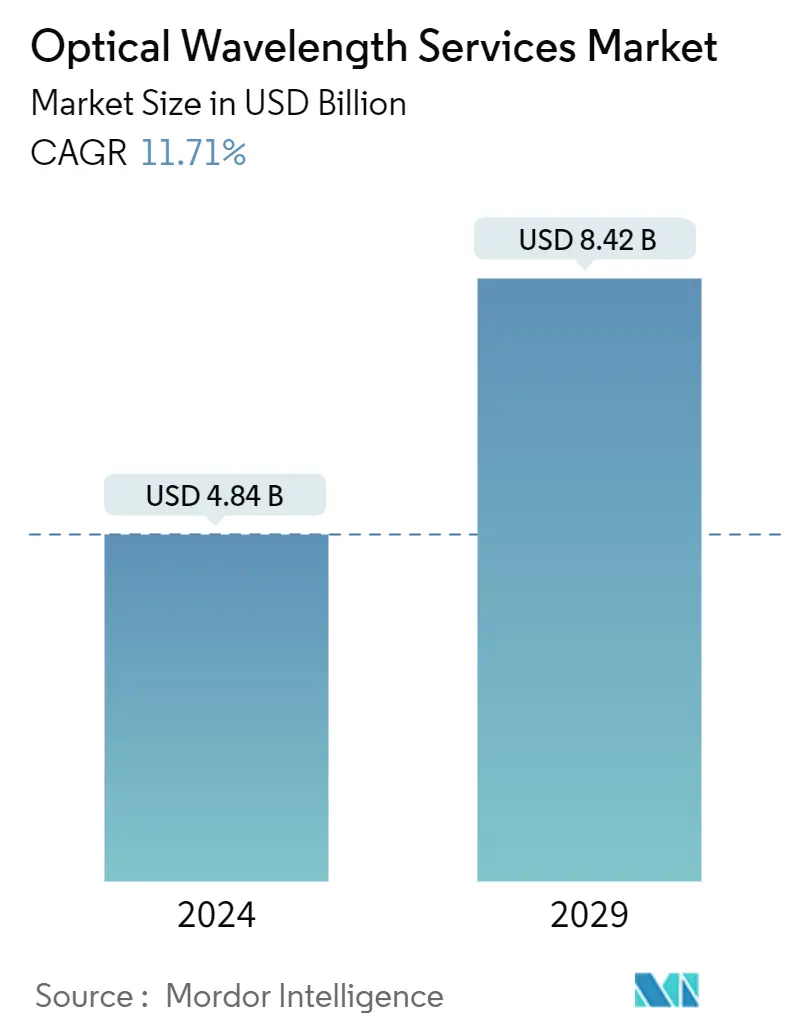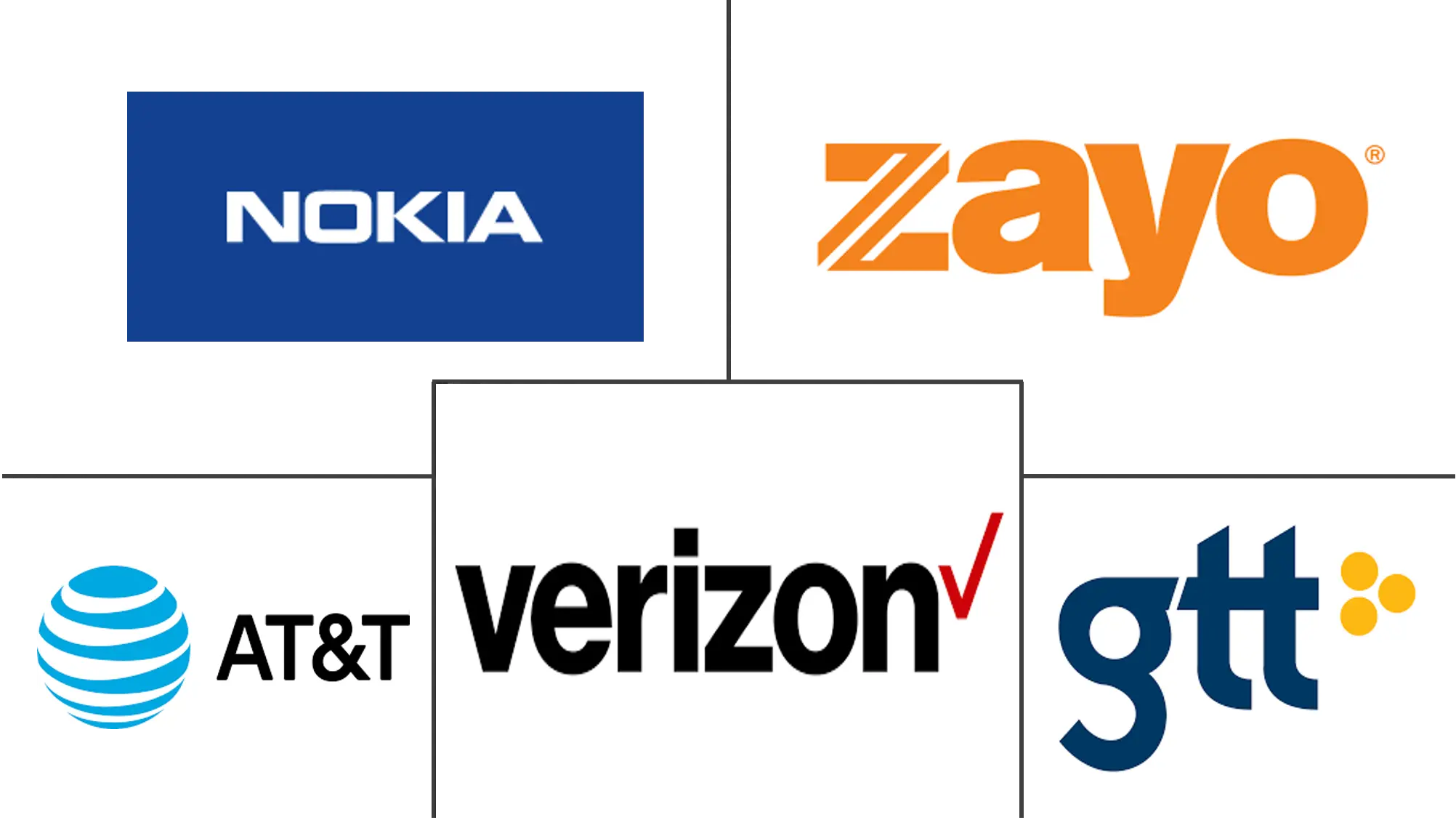Market Size of Optical Wavelength Services Industry

| Study Period | 2019-2029 |
| Market Size (2024) | USD 4.84 Billion |
| Market Size (2029) | USD 8.42 Billion |
| CAGR (2024 - 2029) | 11.71 % |
| Fastest Growing Market | Asia Pacific |
| Largest Market | North America |
Major Players
*Disclaimer: Major Players sorted in no particular order |
Need a report that reflects how COVID-19 has impacted this market and its growth?
Optical Wavelength Services Market Analysis
The Optical Wavelength Services Market size is estimated at USD 4.84 billion in 2024, and is expected to reach USD 8.42 billion by 2029, growing at a CAGR of 11.71% during the forecast period (2024-2029).
Global data volumes projected to double during forecasted year, there is a growing need to focus on cost and power consumption per bit. Extending large wavelengths across longer distances can make services more cost-effective and efficient for end-users. Larger wavelengths also provide significant network bandwidth expansion, essential to power high-definition content, 5G cell networks, IoT, remote work, and other applications.
- The demand for fiber-to-home (FTTH) systems is increasing, accelerating the deployment of network connections not just in urban areas but also in rural and remote locations. These investments lead to more robust competition among cable companies to create a denser, higher-performance wireless network and high wavelength services.
- In February 2023, Fujitsu launched the Ultra Optical System called 1FINITY, a hyper-reliable optical transport platform delivering extreme performance and scalability with data rates of 1.2 terabits per second (Tbps) on a single wavelength. This platform helps to reduce power consumption and achieve a 60% reduction of CO2 emissions throughout networks.
- Despite the benefits of implementing FTTH more extensively across networks, carriers are still discouraged by the cost of installing additional fiber and the end-users' optical modems. As the industry transitions to larger bandwidths, such as 50G and 100G, which require coherent technology in the modems, this cost issue will worsen.
- Even after the Covid-19 pandemic, network operators continue to add more gear and capacity to support remote work, cloud-based services, streaming video, IoT, and 5G wireless technology. This increasing demand for data and high-speed networks with uninterrupted supply drives Network Solution providers to adopt high wavelengths that can quickly scale up capacity to address traffic bottlenecks or combat slower data transfer speeds.
